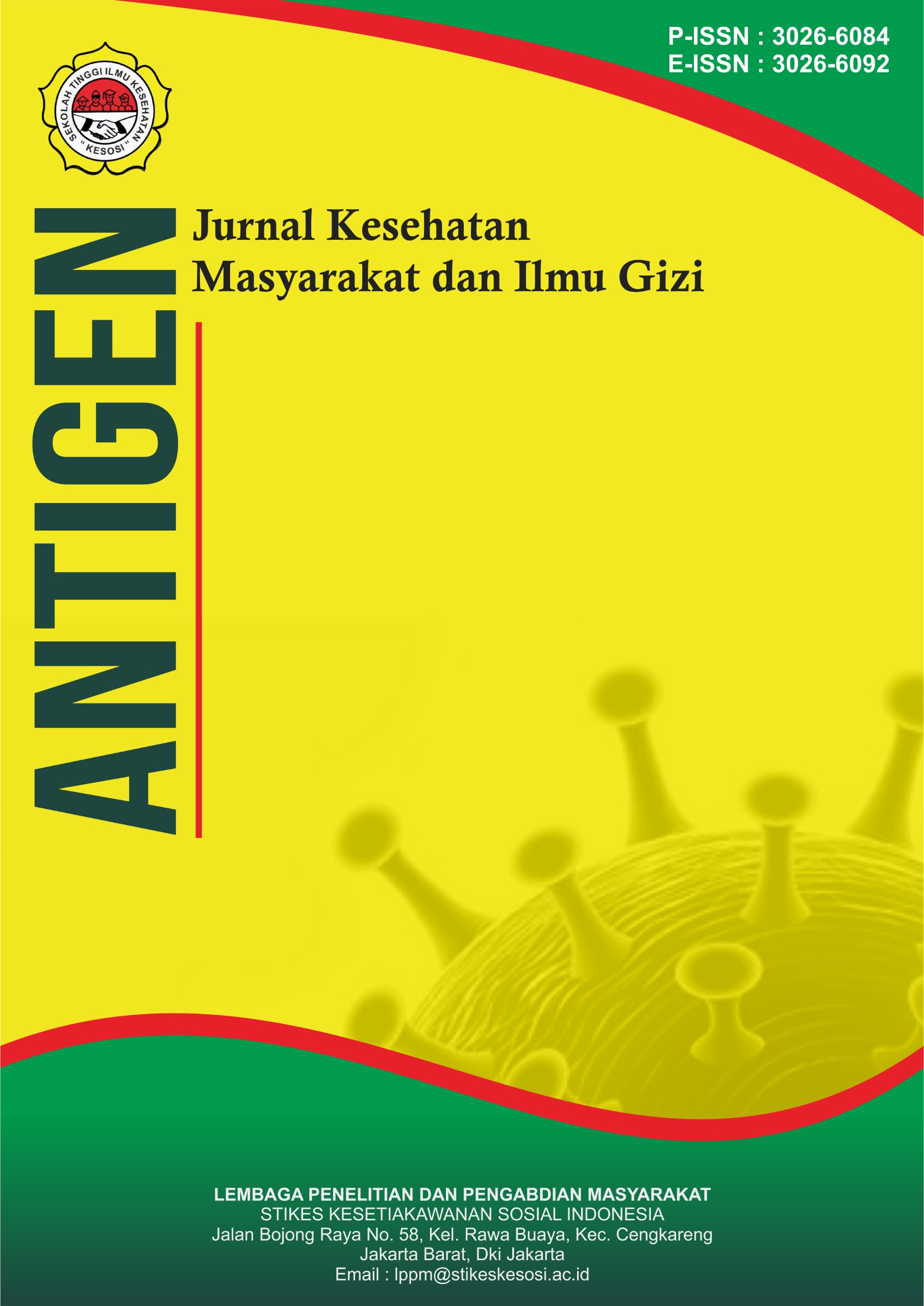Gambaran Kadar Kreatinin Serum Pada Peminum Kopi di Desa Cikuya Kecamatan Banjarharjo Kabupaten Brebes Jawa Tengah
DOI:
https://doi.org/10.57213/antigen.v3i1.548Keywords:
Caffeine, Coffee, Creatinine, Kidney FailureAbstract
One of the most important organs in the body and has an important role in maintaining body health is the kidneys. Caffeine as one of the factors causing chronic kidney failure is found in coffee drinks. Coffee contains caffeine compounds which can have a negative impact on the kidneys because they can cause caffeine to accumulate in the kidney glomeruli, which causes creatinine levels to increase and kidney function to decrease. The aim of this research was to determine the results of checking creatinine levels in coffee drinkers in Cikuya Village, Banjarharjo District, Brebes Regency, Central Java. This research is descriptive in nature. The sample in this study was 40 coffee drinkers in Cikuya Village, Banjarharjo District, Brebes Regency, Central Java. Based on the research results, results were obtained from the 40 samples studied, namely: with high creatinine levels in 7 samples (17.5%), normal creatinine levels in 29 samples (72.5%), and low creatinine levels in 4 samples (10%). These results show that the average creatinine level in male coffee drinkers in Cikuya Village, Banjarharjo District, Brebes Regency, Central Java, has normal creatinine levels in accordance with the normal value for creatinine examination, namely 0.7 mg/dl – 1.3 mg/dl.
References
Adnan, A. A. (2016). Hubungan konsumsi kopi dengan kadar kreatinin serum dan klirens kreatinin pada serum supir angkutan kota. Repository Poltekkes Kemenkes Bandung.
Anis, P., Edy, P., & Komalawati. (2023). Analysis of efficiency and income of robusta coffee farming in Batang District, Indonesia. Russian Journal of Agricultural and Socio-Economic Sciences, 11(143), 157-161.
Azahra, D. A. (2022). Gambaran kadar kreatinin pada laki-laki pecandu kopi di Kelurahan Sukajaya Kota Palembang Tahun 2022. Politeknik Kesehatan Palembang.
Guyton, A. C., & Hall, J. E. (2014). Buku Ajar Fisiologi (Edisi 12). Jakarta: EGC.
Heriansyah. (2019). Gambaran ureum dan kreatinin pada pasien gagal ginjal kronis di RSUD Karawang. Universitas Binawan.
Indonesian Renal Registry. (2014). 7th Report of Indonesian Renal Registry. Indonesian Renal Registry.
Intarti, W. D., & Khoriah, S. N. (2018). Faktor-faktor yang mempengaruhi pemanfaatan posyandu LNSIA. Journal of Health Studies, 2(1), 110-122.
Kemenkes RI. (2017). Situasi penyakit ginjal kronik. Pusat Data dan Informasi Kemenkes RI, 1–10.
Paramita, N. P. A. I. (2019). Gambaran kadar kreatinin serum pada anggota fitnes center di Rai Fitnes Bandung. Politeknik Kesehatan Kemenkes Denpasar Jurusan Analis Kesehatan Denpasar.
Potter, A., & Perry, A. G. (2006). Buku Ajar Fundamental Keperawatan: Konsep, Proses, Dan Praktik (Edisi 4, Volume 2). Jakarta: EGC.
Pranandari, R., & Supadmi, W. (2015). Faktor risiko gagal ginjal kronik di unit hemodialisis RSUD Wates Kulon Progo. Majalah Farmaseutik, 11(2), 316-320.
Rahmawati, F. (2017). Aspek laboratorium gagal ginjal kronik. Jurnal Ilmiah Kedokteran Wijaya Kusuma, 6(1), 14-22.
Riskesdas. (2018). Laporan Riskesdas 2018 Kementrian Kesehatan Republik Indonesia. Laporan Nasional Riskesdas 2018, 53(9), 154-165.
Riza, M., & Andina, A. P. (2019). The comparison effect of energy drinks and coffee on creatinine level in rats. International Journal of Human and Health Sciences (IJHHS), 3(4), 231-234.
Santo, B., & Simamora, D. (2021). Pengaruh pemberian minuman energi terhadap kadar serum kreatinin Rattus norvegicus. Jurnal Ilmiah Ilmu Kedokteran Wijaya Kusuma, 10(1), 92-101.
Downloads
Published
Issue
Section
License
Copyright (c) 2024 Antigen : Jurnal Kesehatan Masyarakat dan Ilmu Gizi

This work is licensed under a Creative Commons Attribution-ShareAlike 4.0 International License.






